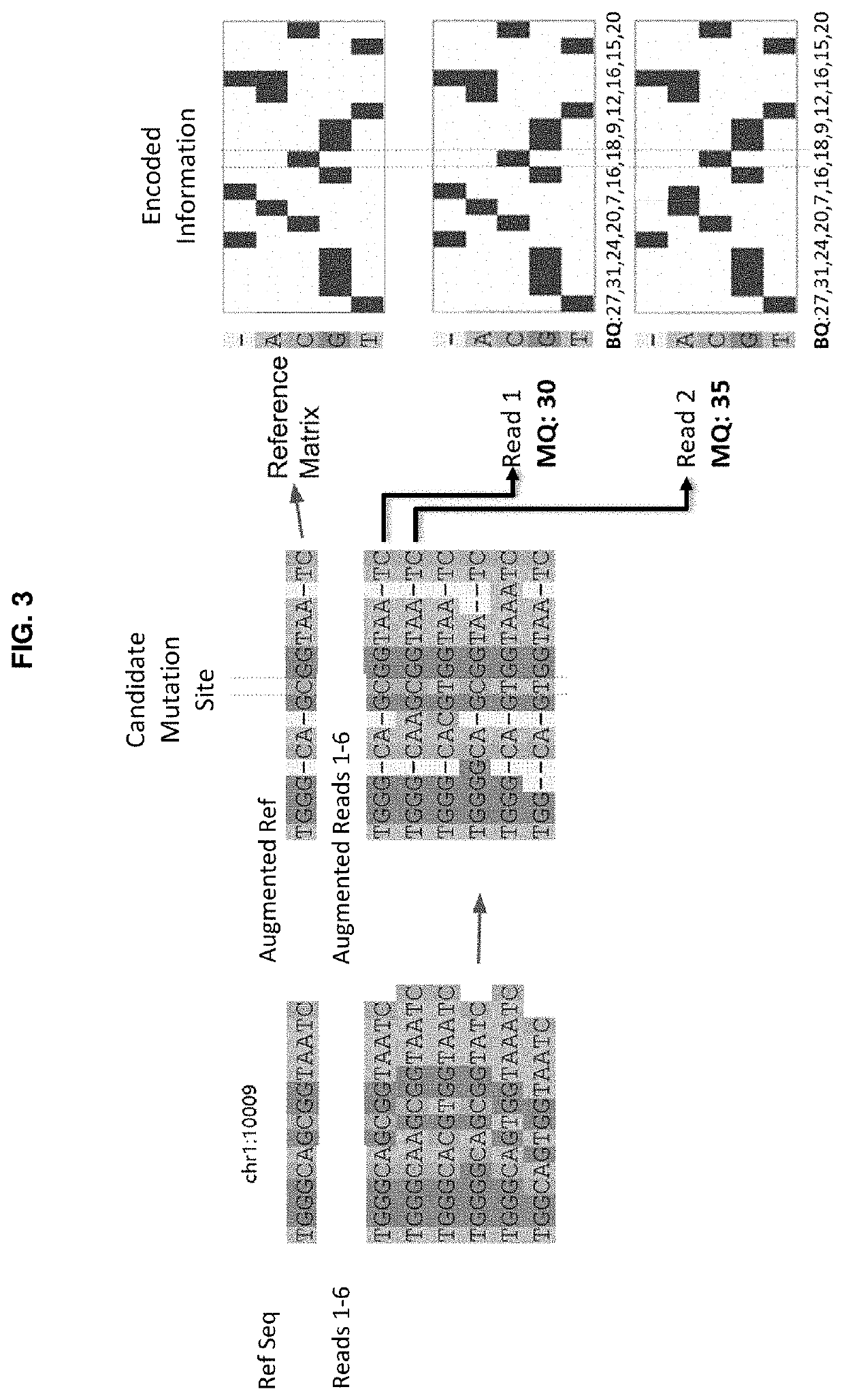Genetic mutation detection using deep learning
a gene mutation and deep learning technology, applied in the field of deep learning, can solve the problems of large difficulty in the process of correct identification, high error rate of 0.1-10% of the sequence read provided by ngs technology, and high processing cost of ngs
- Summary
- Abstract
- Description
- Claims
- Application Information
AI Technical Summary
Benefits of technology
Problems solved by technology
Method used
Image
Examples
Embodiment Construction
[0047]Unless defined otherwise, all technical and scientific terms used herein have the same meaning as commonly understood by one of ordinary skill in the art to which the present invention pertains. Generally, the terms used to describe the techniques and procedures described herein are well understood and commonly employed by those of ordinary skill in the art, such as the common techniques and methodologies used for high-throughput (or next-generation) sequencing and for calling mutations (e.g., SNPs or SNVs) from this type of sequencing data. Such common techniques and methodologies for sequence data acquisition and mutation analysis are described in e.g., Goodwin et al., “Coming of age: ten years of next generation sequencing technology,” Nat Rev Genet. 2016 June; 17(6):333-51; and Nielsen et al., “Genotype and SNP calling from next-generation sequencing data,” Nat. Rev. Genet. 2011 June; 12(6): 443-451.
[0048]For purposes of interpreting this disclosure, where appropriate, a t...
PUM
 Login to View More
Login to View More Abstract
Description
Claims
Application Information
 Login to View More
Login to View More - R&D
- Intellectual Property
- Life Sciences
- Materials
- Tech Scout
- Unparalleled Data Quality
- Higher Quality Content
- 60% Fewer Hallucinations
Browse by: Latest US Patents, China's latest patents, Technical Efficacy Thesaurus, Application Domain, Technology Topic, Popular Technical Reports.
© 2025 PatSnap. All rights reserved.Legal|Privacy policy|Modern Slavery Act Transparency Statement|Sitemap|About US| Contact US: help@patsnap.com



